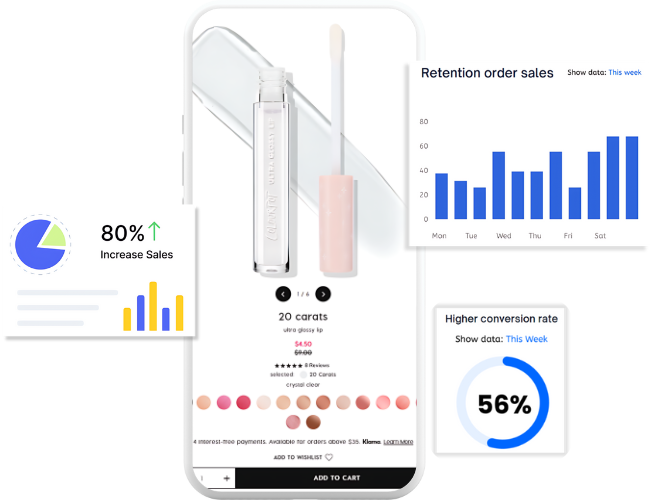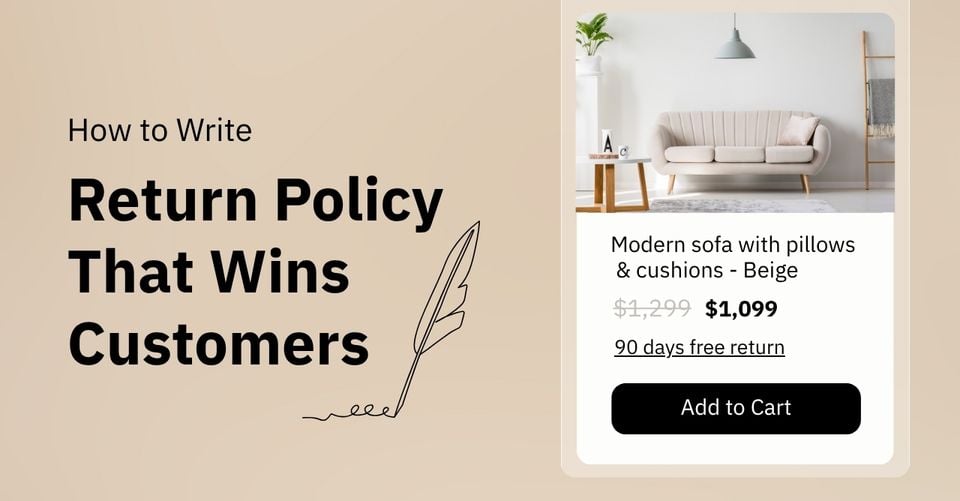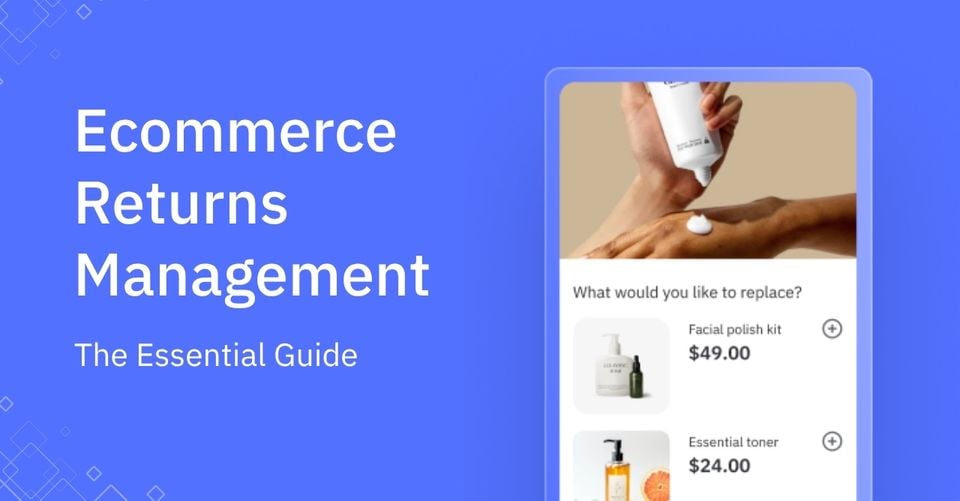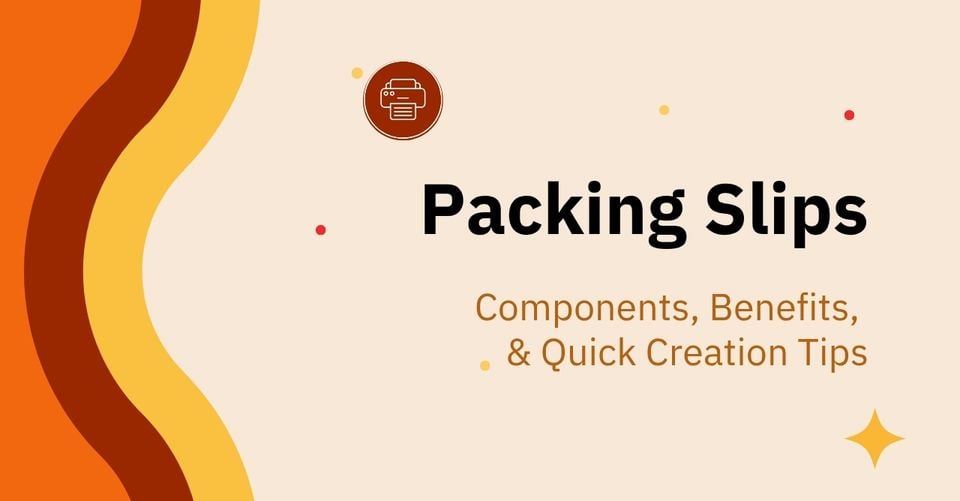Does your supplier demand a minimum order? This can make managing your inventory a complex task. While your goal is to avoid excess while meeting customer demand, suppliers will set MOQs to streamline production and maintain profits. The good news is that there are ways to optimize Shopify’s minimum order quantity. This guide will break down everything you need to know to manage MOQ effectively and maintain a minimum stock level.
What Is Minimum Order Quantity (MOQ)?
So, what does MOQ stand for? Minimum Order Quantity (MOQ) is the smallest number of products you must buy in one order from a supplier. Suppliers set MOQs to prevent wasting resources on small orders that yield little or no profit. Most inventory models attempt to minimize cost and waste, and this MOQ approach aligns with an objective.
MOQ can be based on unit count or total order value. For instance, consider pens: you buy them at $0.20 each, and your supplier’s MOQ is 1,000 units. This means you’ll need to spend at least $200 on pens per order. Different products have different MOQs. Typically, items that are costlier to produce have lower MOQs than those that are cheap and easy to produce.
MOQ’s Impact on Inventory Management
What impact does MOQ have on inventory? Whether high or low, supplier MOQs significantly affect your stock management. They influence how long you hold stock, the frequency of your orders, and the space needed in your warehouse. If you can’t meet a supplier’s MOQ, you may need to find another source or pay extra to buy less than the MOQ.
High and Low MOQs
A high MOQ means you’re ordering products in large quantities. This often means longer lead times and more warehouse space being used. It also ties up more of your working capital. However, the benefits include lower administrative costs from less frequent orders, better pricing for bulk purchases, and a reduced risk of running out of stock.
Conversely, low MOQs mean you’ll have less inventory on hand, but may need to restock more often, potentially increasing administrative or shipping costs. However, MOQ meaning in supply chain terms also involves flexibility. Lower MOQs can reduce the risk of overstocking and offer more agility in responding to market changes.
Pro tip: To handle MOQs efficiently in Shopify, set reorder points in the Shopify Admin. This particular setting sends low-stock alerts, ensuring you have enough time to replenish your inventory before it depletes. It’s especially useful for managing both high and low MOQ situations, allowing you to maintain optimal stock levels.
The Benefits of Optimizing MOQ
When you optimize the minimum order quantity, your business operations see significant improvements. Let’s explore five key benefits of MOQ optimization.
Cost Savings
Optimizing MOQ is key to cost savings across various business types. Getting the MOQ right means ordering quantities you’re confident will sell. This precision helps you avoid overspending on slow-moving stock while buying just enough inventory to achieve the minimum fulfillment of orders.
Ordering the correct amount also saves on storage costs. In MOQ wholesale scenarios, bulk purchases typically offer cost benefits. However, ordering in excess can lead to the financial burden of storing unsold stock.
The essence lies in balancing MOQ. It’s about ordering enough to secure bulk discounts without creating surplus inventory. This balance is crucial for maintaining cost efficiency and effective inventory management.
Improved Supplier Negotiations
Getting the MOQ right also means you can negotiate better with suppliers. Knowing your MOQ needs lets you discuss more favorable terms. This is especially helpful for startups or small businesses that might not have the funds for large inventories.
Good negotiation can also get you better prices per unit. When you’re consistently meeting the MOQ your supplier sets, there’s a good chance they’ll agree to a lower price per item.
Better Market Responsiveness
Optimizing minimum order quantity (MOQ) is key to keeping your business nimble in a fast-changing market. Fine-tuning MOQ allows you to align your inventory closely with customer demands and seasonal trends. This strategy enables the quick introduction of new products, ensuring you’re always in step with market shifts.
At the same time, it simplifies phasing out underperforming items, keeping your inventory lean and relevant. This approach helps you meet market demands efficiently, without the burden of unsold stock. Being responsive in this manner not only drives your sales up but also cements your brand’s reputation as adaptive and customer-centric.
Effective Inventory Management
Aligning MOQ with your sales data streamlines inventory turnover, leading to steady cash flow. This is crucial for products with seasonal demand. By tailoring the MOQ to these demand cycles, you avoid overstocking during slower periods. Solutions like Modula Australia’s advanced storage systems can further enhance inventory efficiency by optimizing space and access to stock.
The strategy also saves storage space and reduces the chance of your stock becoming outdated. It’s about smart stock management, ensuring you have the right amount at the right time.
Reduced Risk of Obsolescence
An optimized MOQ also cuts down on the risk of products becoming obsolete. This is crucial in industries like technology or fashion, which change rapidly. Businesses that align their order quantities with actual demand avoid stockpiling items that may soon be out of date. It’s a great way to keep your inventory current and in line with customer’s preferences.
How to Calculate MOQ: Formulas and Calculation Steps
Determining the right minimum order quantity is crucial for e-commerce businesses and suppliers alike. The decision often involves a trade-off between:
- a higher MOQ for a lower price per unit
- a higher price per unit for a lower MOQ.
While there’s no one-size-fits-all formula, certain steps can guide you to a suitable Shopify minimum order quantity.
1. Determine Demand
As a supplier or merchant, inventory forecasting should be at the top of your agenda. Think about the type of item, competition level, ongoing trends, and other factors to evaluate how many units you’ll sell. Accurate predictions (or close to accurate) improve your odds of meeting supply and prevent understocking or overstocking.
Moreover, consider the supplier’s lead time, warehouse receiving via a 4PL or 3PL vendor, and other factors that may cause potential delays. Accounting for such things helps in preparation in case you require the stock earlier than anticipated.
2. Calculate Your Break-Even Point
Knowing the break-even point is crucial for both suppliers and merchants. It’s the price per unit at which your business neither profits nor loses money.
Break-Even Point = Fixed costs / (Sales price per unit – variable costs per unit)
For example, if a supplier’s variable cost to produce a high-tech kitchen gadget is $10 per unit, the fixed costs are $5,000, and they sell each unit for $20, the break-even point per unit would be:
Break-Even Point= $5,000 / ($20-$10 units) =$500 per unit
3. Understand Your Holding Costs
Assess your inventory and storage costs. Include storage space, insurance, and any specific requirements for the product. Use the min-max calculation to find the best inventory level range. This approach lets you adjust the MOQ. It strikes a balance between having enough supply and reducing financial pressure from storage expenses.
4. Set Your MOQ
Imagine you supply handmade soaps. Your daily overheads, including labor, rent, and marketing, total $400. Each soap incurs a cost of $5 to make, and you retail each bar at $15.
Define W as the number of soaps you need to sell daily to cover costs.
Your break-even formula is $15W = $400 + $5W. Solving for W gives you 40.
So, you must sell 40 soaps each day to break even.
Now, it’s time to set your MOQ. Assume you typically complete an order in 4 days and can manage 3 orders simultaneously.
Your MOQ calculation would be 3*MOQ/4 = 40, which simplifies to MOQ = 53.3.
Rounding up, you’d set your MOQ at 54 soaps per order.
In summary, your MOQ formula:
MOQ = Breakeven point/the number of orders you can handle per day.
As you can see, calculating Shopify’s minimum order quantity involves a mix of demand forecasting, understanding your break-even point, considering holding costs, and then setting an MOQ that aligns with your sales strategy. This process helps ensure that your business remains profitable while meeting market demands.
MOQ Optimization Strategies
Optimizing MOQ in the supply chain is crucial for businesses, particularly for online platforms like Shopify. Here’s how you can turn MOQ challenges into opportunities:
Dynamic Pricing Strategies
Embrace dynamic pricing as a first step. This involves adjusting your prices based on market demand, competition, and even the time of year. For instance, if you’re selling summer accessories on Shopify, you can hike up prices around the beach season. This aligns with higher MOQ wholesale demands, helping you clear stock quickly. In the off-season (hello, winter coats), lower prices to move excess inventory, maintaining your minimum stock level without overstocking.
Just-in-Time Inventory
Just-in-time (JIT) inventory strategy streamlines your stock levels and controls costs. You order inventory to coincide precisely with your sales forecasts. This disciplined approach ensures you maintain adequate stock to satisfy demand without overstocking. Aligning closely with supplier MOQs, JIT aids in minimizing storage costs and improving inventory turnover.
Dropshipping as an MOQ Strategy
Dropshipping offers a smart way around MOQ challenges. You list items without stocking them. When a customer buys, the supplier ships directly. This method often involves lower MOQs than traditional wholesalers. For Shopify sellers, tools like Dropshipman simplify this process. With Dropshipman, you can connect with supplies with flexible MOQ terms and choose from a large catalog of products. This makes it easy to do business.
Free Shipping Thresholds
Implement free shipping thresholds. It’s a nifty trick to encourage larger purchases. If your Shopify store offers free shipping for orders over $50, customers are likely to add more to their carts. This strategy helps move more products, helping you optimize your Shopify minimum order quantity and generate loyalty.

Easy to customize your brand loyalty program
6 Practical Tips for Implementing MOQ Optimization
Create Spending Incentives
Boost your sales by offering smart deals. Think about slashing prices on bulk buys. Or, put together attractive product bundles. A deal like ‘buy three, get one free’ is a hit. It ramps up your average order value. It also clears your stock quickly. Plus, it’s spot-on for hitting your MOQ goals. You manage to clear your shelves effectively while ensuring customers return for more.
Implement MOQ Tiers
Setting up MOQ tiers is a savvy move for inventory management. This strategy means you create different MOQ levels. Base these on factors like the type of product, the kind of customer, or the value of the order. Here’s how it works:
- Open your Shopify store and set a MOQ level for new customers
- Offer a lower MOQ for your returning customers or those placing large orders.
This tiered approach motivates customers to buy more and come back for more. It also gives you the flexibility to manage your inventory smartly.
Reduce Your SKU Count
Retailers often carry more SKUs than needed, leading to unnecessary storage costs and fulfilling MOQs for slow-selling products. Simplifying your SKU count aids in better inventory forecasting. Managing a few SKUs, say 15 instead of 50, is more efficient. Resist the urge to introduce too many color options or product variations. In e-commerce, offering more than a handful of choices can overwhelm customers.
Encourage Faster Inventory
Having surplus inventory nudges you to increase your inventory turnover ratio. This means selling your stock faster because of the higher upfront investment. If you’re dealing with a surplus due to supplier MOQs, get creative. Try sticky add-to-cart apps and other tactics to boost your conversions and remove excess stock.
Explore Alternative Suppliers
If the MOQ from your manufacturer is too high, don’t hesitate to negotiate. If that fails, look for other suppliers or distributors who offer lower MOQs. This can be crucial for businesses that are not yet fully established in the market. High MOQs can lead to overinvestment in inventory and increased warehousing costs.
Negotiate, Mix, and Match
Get creative in discussions with manufacturers. Ask if you can mix and match different products to meet MOQs rather than ordering identical units. Also, inquire if they have surplus stock from canceled orders, which can be purchased without necessitating new production.
Maintain Good Relationships
Having a good relationship with your manufacturer allows you to negotiate more favorable terms. To do this, tell the supplier how they are crucial to your success. Plus, consistently increase the orders you place with them. That’s how you negotiate lower MOQs.
Final Verdict
That’s a wrap-up of our guide to optimizing Shopify minimum order quantity. In the fierce world of e-commerce, having an edge is crucial. Streamlining your MOQ keeps you ahead in this competitive arena.
Here’s a quick recap:
- Understand MOQ: It’s the minimum you can order from a supplier, and it’s vital for managing inventory and costs.
- Balance your MOQ: Aim for enough stock to snag discounts, but avoid excess that leads to unsold inventory.
- Negotiate with suppliers: Good negotiation can secure better MOQ terms, a key move for startups and budget-tight businesses.
- Embrace dynamic pricing and JIT: These strategies are gold for MOQ management. They sync your purchases with real sales trends.
Now’s your chance to put these strategies into play. Running a Shopify store or any online business, these tactics will sharpen your inventory management. Want more depth? Sign up for our MOQ management webinar or grab our MOQ playbook.
FAQs
Note: This blog was originally written in English and translated using an automated tool to make the content accessible to a global audience. We believe in sharing valuable insights with everyone and apologize for any inaccuracies. If you spot any errors, please feel free to contact us for corrections. Your feedback helps us improve and ensures the content’s value is fully realized.





